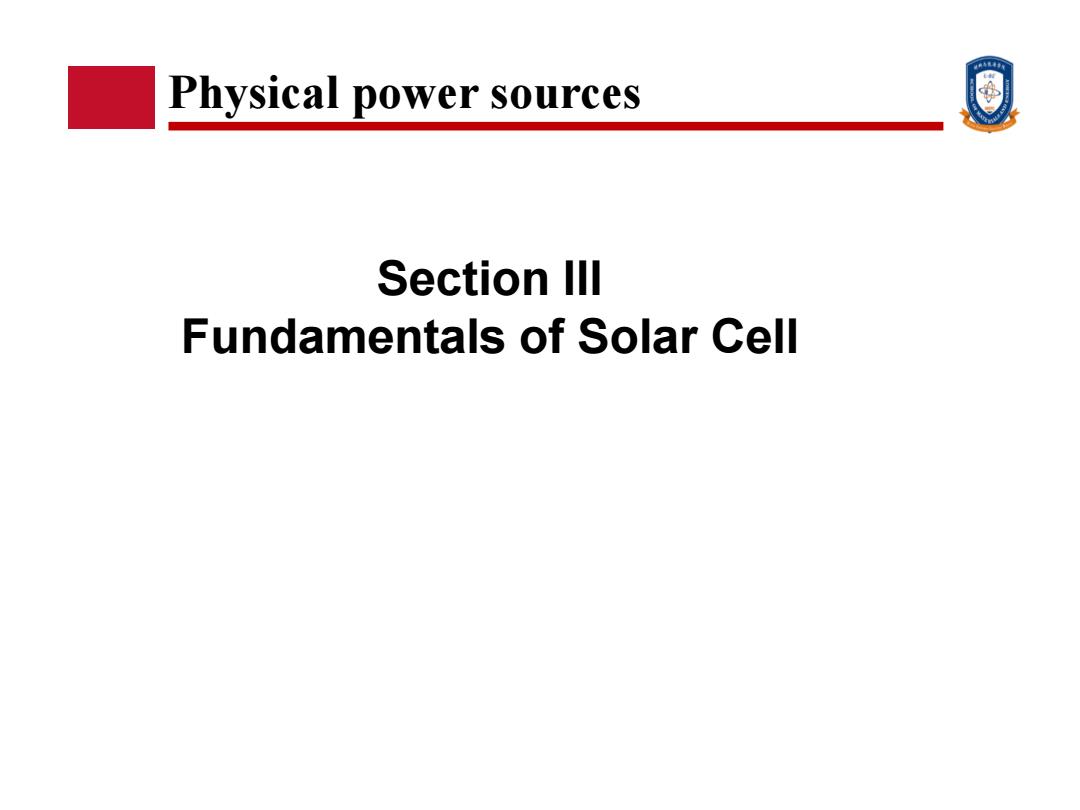
Physical power sources Section Ill Fundamentals of Solar Cell
Section III Fundamentals of Solar Cell Physical power sources
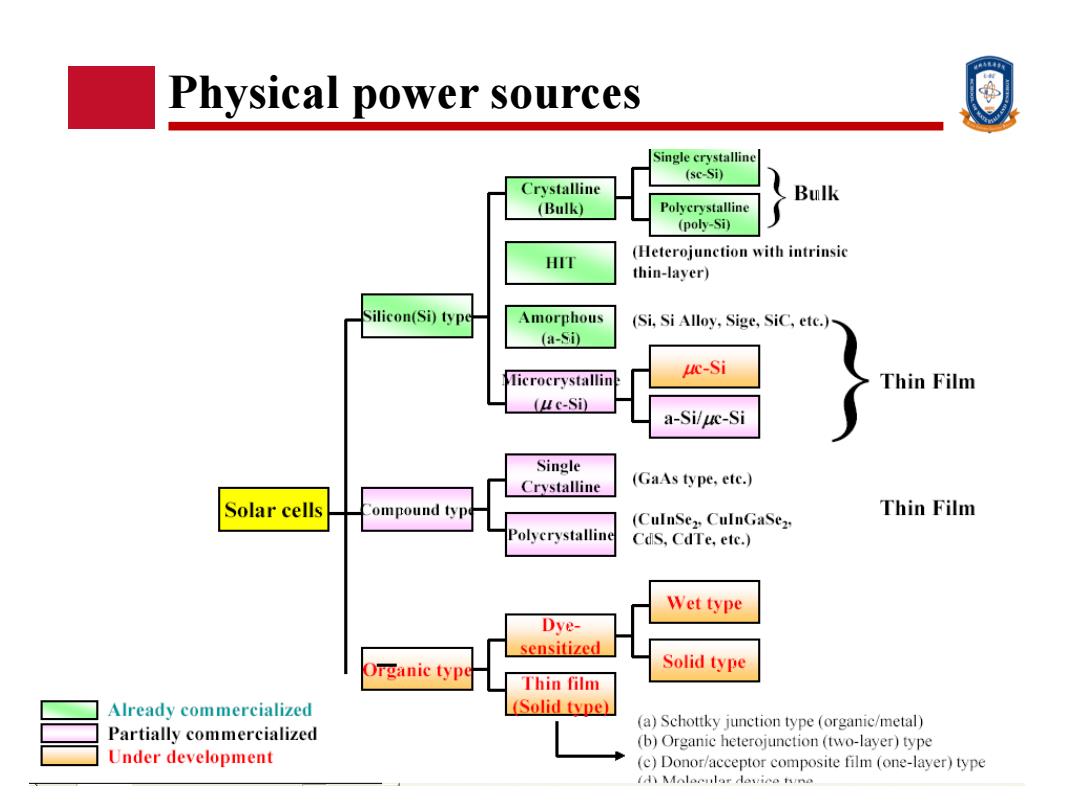
Physical power sources Single crystalline (se-Si) Crystalline Bulk (Bulk) Polycrystalline (poly-Si) (Heterojunction with intrinsic HIT thin-layer) Silicon(Si)type Amorphous (Si,Si Alloy,Sige,SiC,etc.) (a-Si) ue-Si licrocrystallin Thin Film (uc-Si) a-Siluc-Si Single Crystalline (GaAs type,ete.) Solar cells ompound typ Thin Film (CulnSe2 CulnGaSez Polycrystalline CdS,CdTe,ete.) Wet type Dye- sensitized Organic type Solid type Thin film Already commercialized (Solid type) (a)Schottky junction type (organic/metal) Partially commercialized (b)Organic heterojunction (two-layer)type Under development (c)Donor/acceptor composite film (one-layer)type (d)MAolecular davice tune
Physical power sources
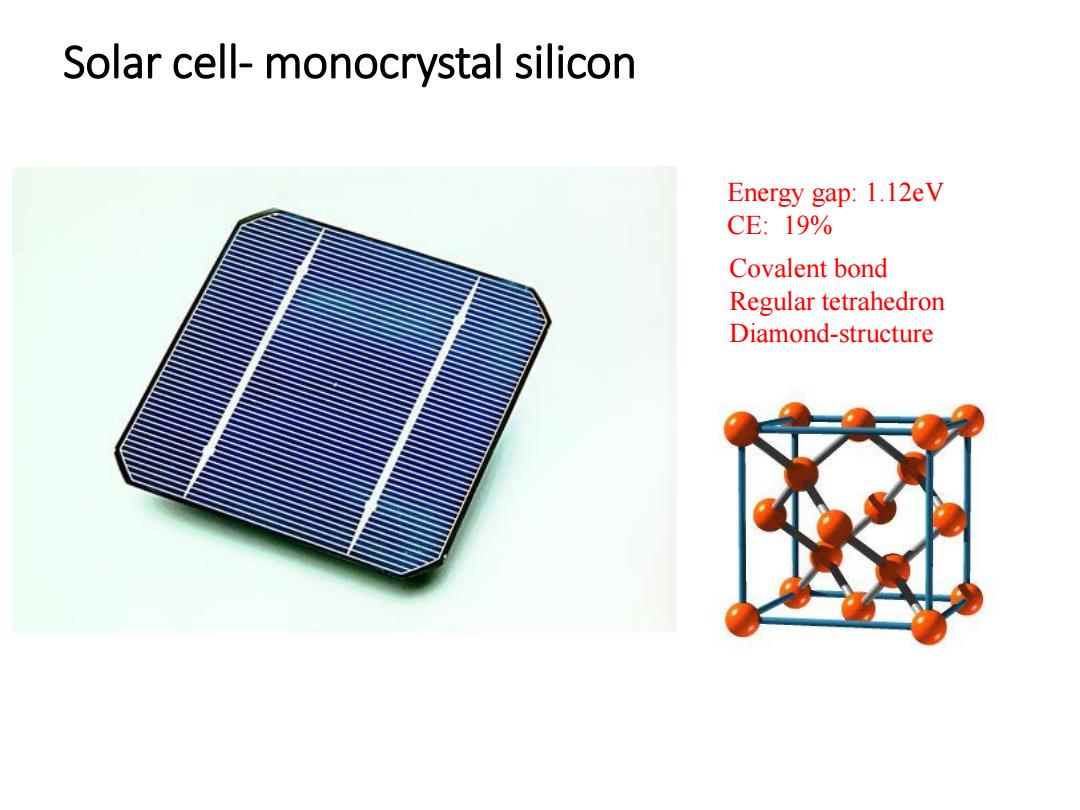
Solar cell-monocrystal silicon Energy gap:1.12eV CE:19% Covalent bond Regular tetrahedron Diamond-structure
Solar cell- monocrystal silicon Energy gap: 1.12eV CE: 19% Covalent bond Regular tetrahedron Diamond-structure
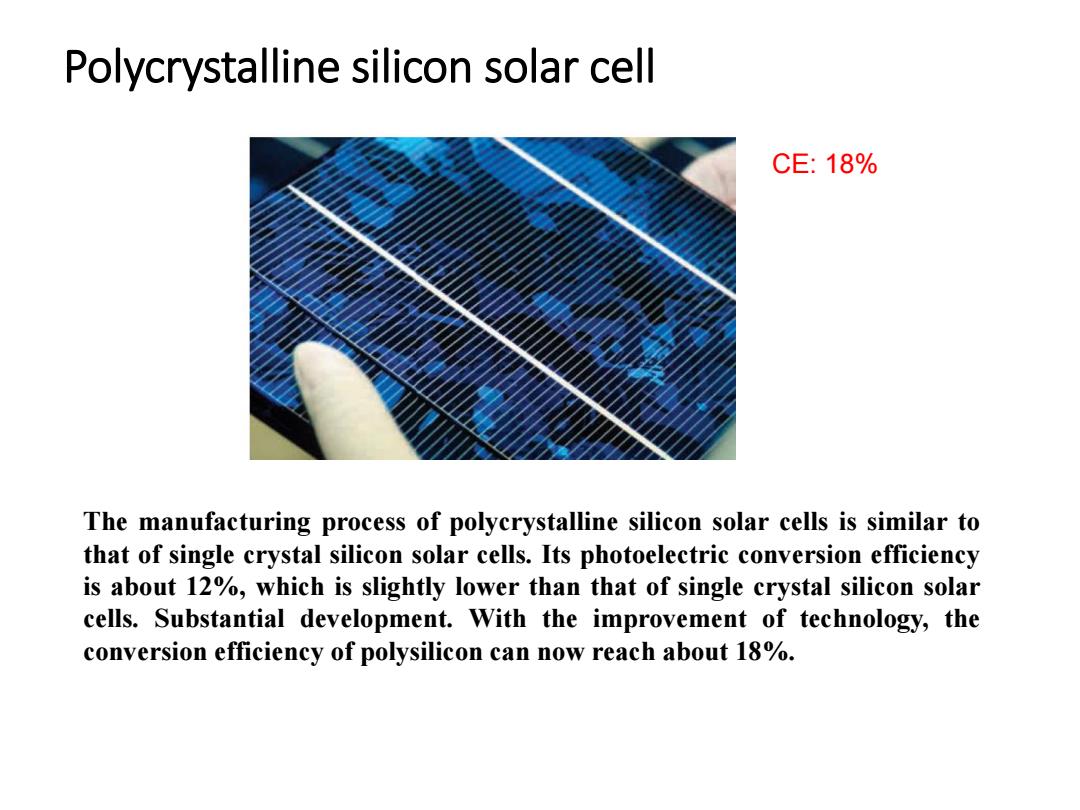
Polycrystalline silicon solar cell CE:18% The manufacturing process of polycrystalline silicon solar cells is similar to that of single crystal silicon solar cells.Its photoelectric conversion efficiency is about 12%,which is slightly lower than that of single crystal silicon solar cells.Substantial development.With the improvement of technology,the conversion efficiency of polysilicon can now reach about 18%
Polycrystalline silicon solar cell CE: 18% The manufacturing process of polycrystalline silicon solar cells is similar to that of single crystal silicon solar cells. Its photoelectric conversion efficiency is about 12%, which is slightly lower than that of single crystal silicon solar cells. Substantial development. With the improvement of technology, the conversion efficiency of polysilicon can now reach about 18%
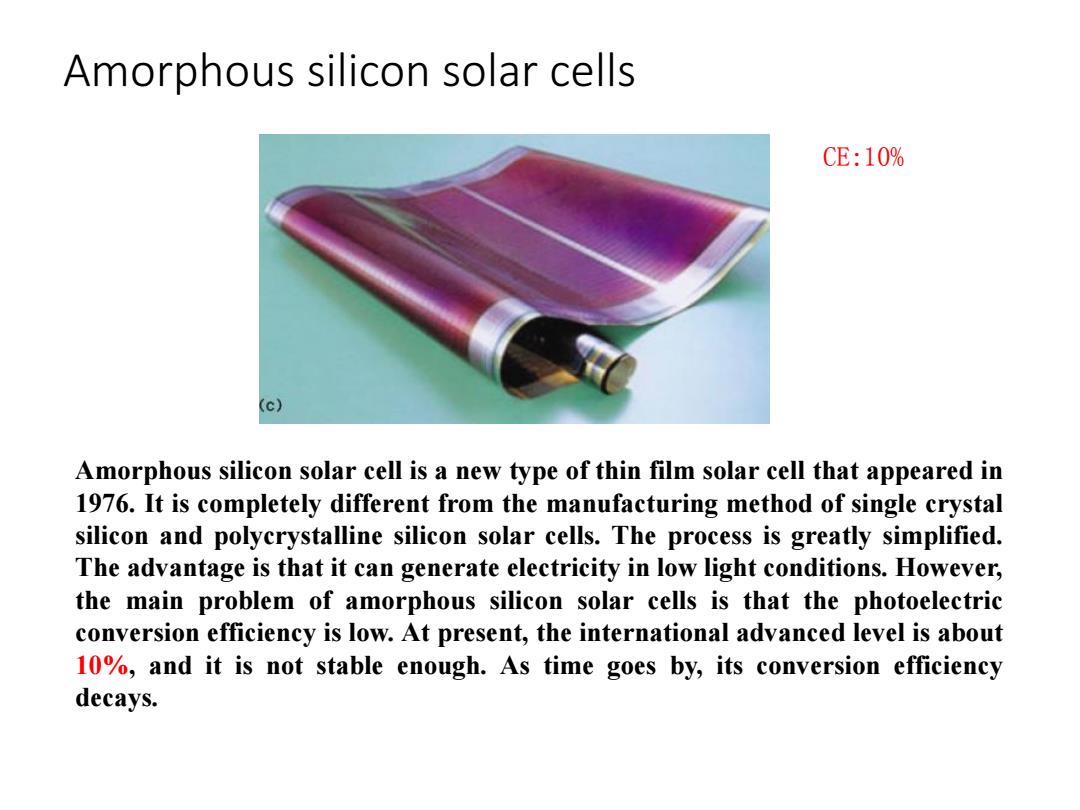
Amorphous silicon solar cells CE:10% (c) Amorphous silicon solar cell is a new type of thin film solar cell that appeared in 1976.It is completely different from the manufacturing method of single crystal silicon and polycrystalline silicon solar cells.The process is greatly simplified. The advantage is that it can generate electricity in low light conditions.However, the main problem of amorphous silicon solar cells is that the photoelectric conversion efficiency is low.At present,the international advanced level is about 10%,and it is not stable enough.As time goes by,its conversion efficiency decays
Amorphous silicon solar cells CE:10% Amorphous silicon solar cell is a new type of thin film solar cell that appeared in 1976. It is completely different from the manufacturing method of single crystal silicon and polycrystalline silicon solar cells. The process is greatly simplified. The advantage is that it can generate electricity in low light conditions. However, the main problem of amorphous silicon solar cells is that the photoelectric conversion efficiency is low. At present, the international advanced level is about 10%, and it is not stable enough. As time goes by, its conversion efficiency decays

Diversity of solar cell Classified by structure: Classified by purpose: Homojunction solar cell Space solar cell Heterojunction solar cell Ground solar battery Schottky junction solar cell Light sensor Composite junction solar cell Liquid junction solar cells Classified by work method: Flat solar battery Concentrating solar cell
Classified by structure: Homojunction solar cell Heterojunction solar cell Schottky junction solar cell Composite junction solar cell Liquid junction solar cells Diversity of solar cell Classified by purpose: Space solar cell Ground solar battery Light sensor Classified by work method: Flat solar battery Concentrating solar cell
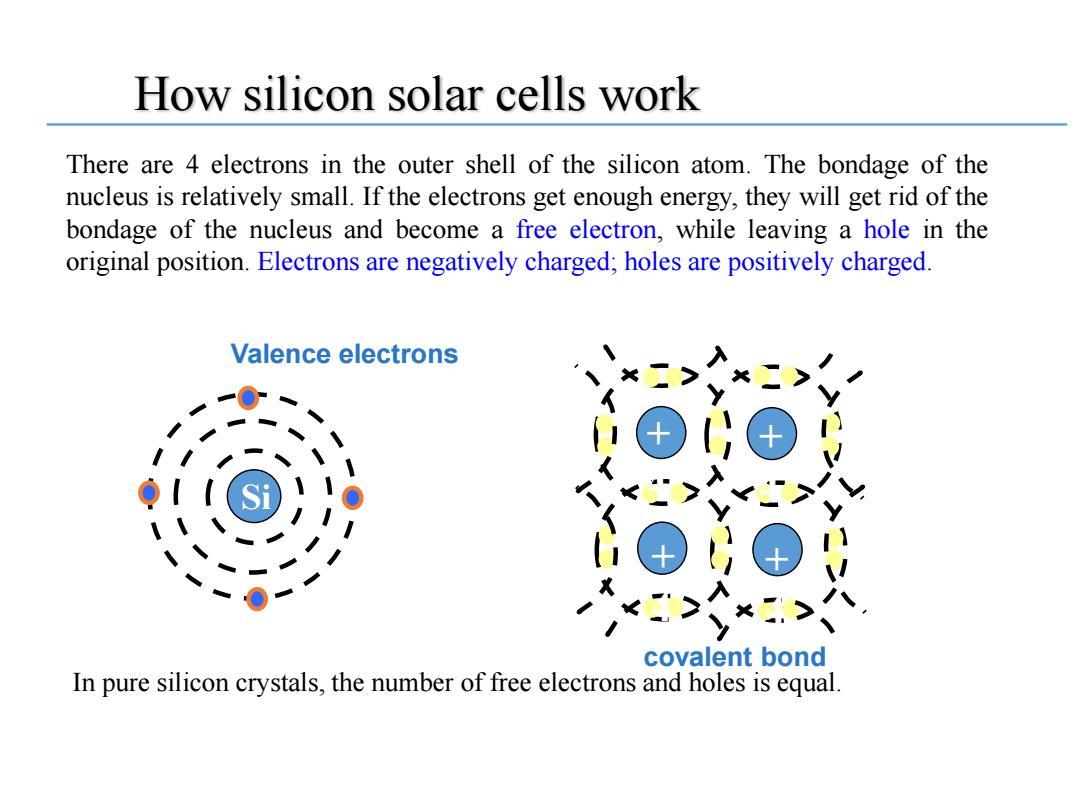
How silicon solar cells work There are 4 electrons in the outer shell of the silicon atom.The bondage of the nucleus is relatively small.If the electrons get enough energy,they will get rid of the bondage of the nucleus and become a free electron,while leaving a hole in the original position.Electrons are negatively charged;holes are positively charged. Valence electrons covalent bond In pure silicon crystals,the number of free electrons and holes is equal
How silicon solar cells work There are 4 electrons in the outer shell of the silicon atom. The bondage of the nucleus is relatively small. If the electrons get enough energy, they will get rid of the bondage of the nucleus and become a free electron, while leaving a hole in the original position. Electrons are negatively charged; holes are positively charged. In pure silicon crystals, the number of free electrons and holes is equal. Si + 4 + 4 + 4 + 4 covalent bond Valence electrons
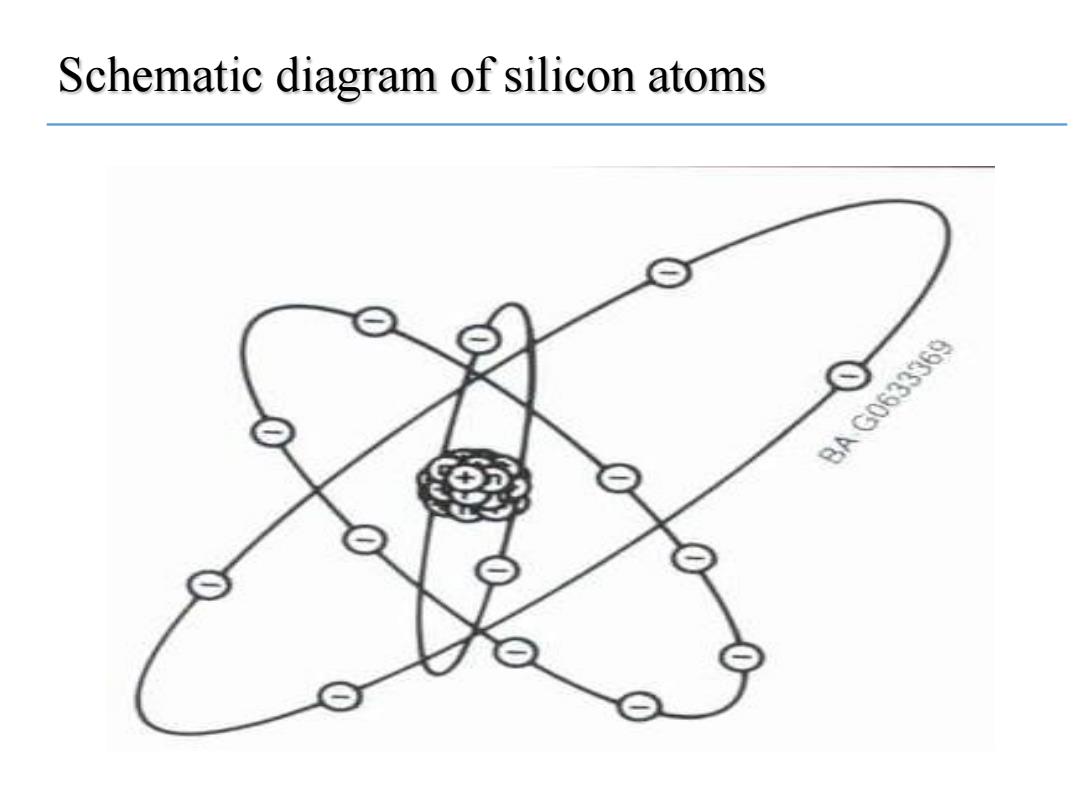
Schematic diagram of silicon atoms BAC0633369
Schematic diagram of silicon atoms
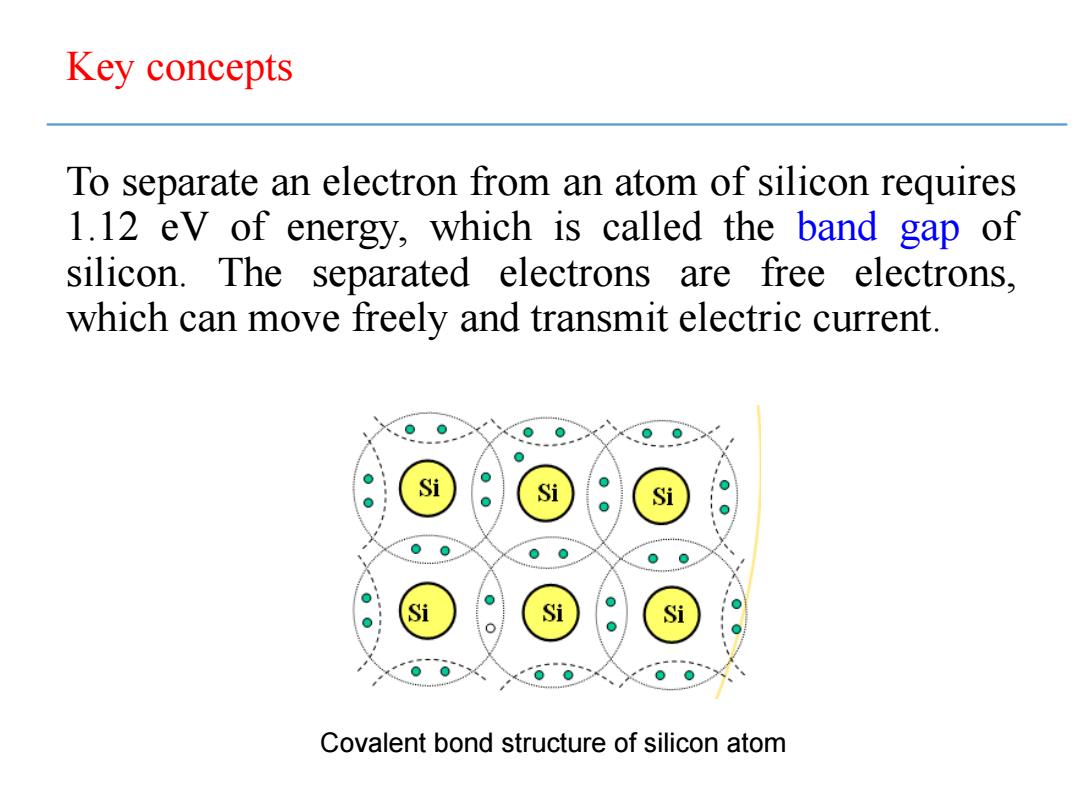
Key concepts To separate an electron from an atom of silicon requires 1.12 ev of energy,which is called the band gap of silicon.The separated electrons are free electrons. which can move freely and transmit electric current. Si Si Si Si Si Si Covalent bond structure of silicon atom
Key concepts To separate an electron from an atom of silicon requires 1.12 eV of energy, which is called the band gap of silicon. The separated electrons are free electrons, which can move freely and transmit electric current. Covalent bond structure of silicon atom
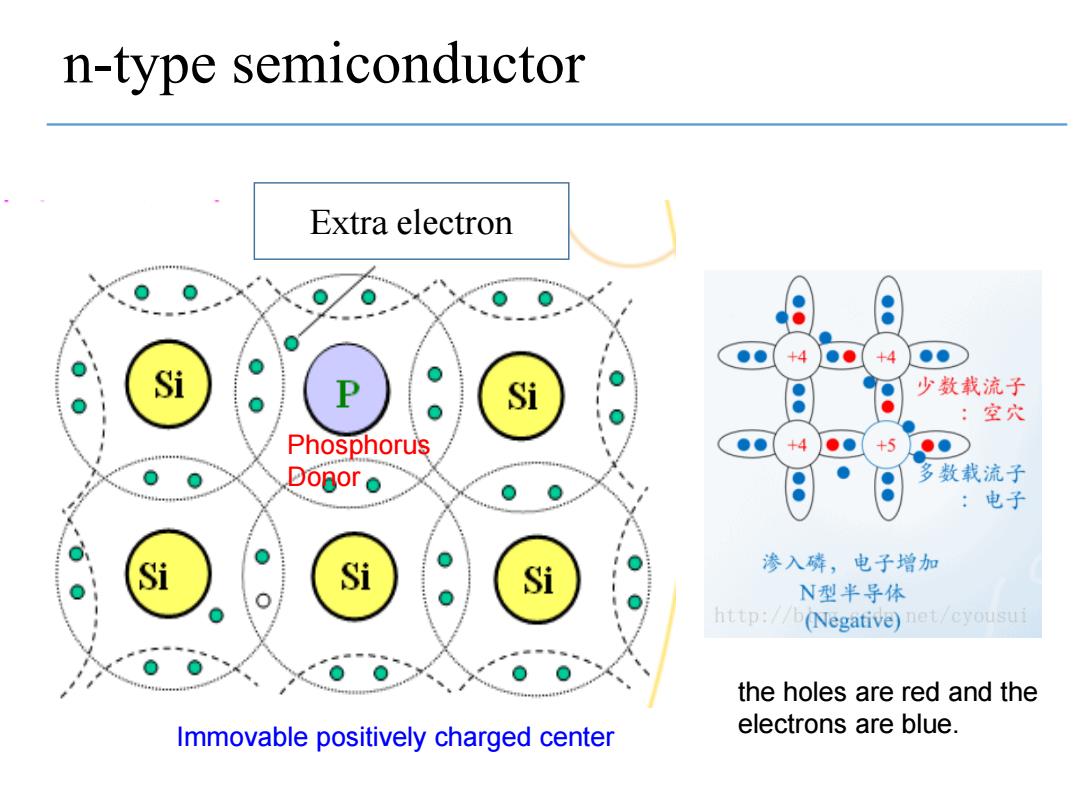
n-type semiconductor Extra electron +4 +4 Si Si 少数载流子 :空穴 Phosphorus DoBor o 多数载流子 :电子 Si Si Si 渗入磷,电子增加 N型半导体 http://b(Negative)net/cyousui the holes are red and the Immovable positively charged center electrons are blue
n-type semiconductor Extra electron Phosphorus Donor the holes are red and the electrons are blue. Immovable positively charged center